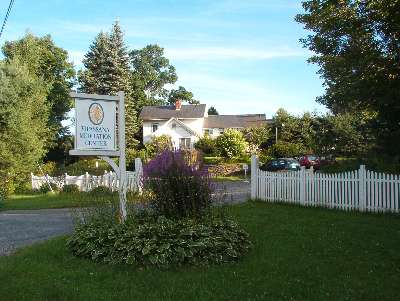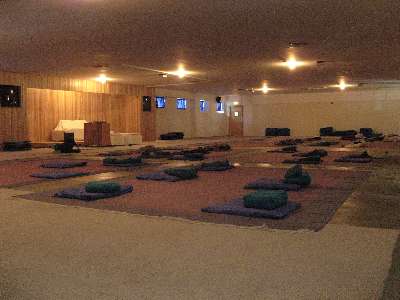Contribute
| Spirituality And Science Meet At Harvard |
Seema Borthakur
01/17/2012
About 200 members of the Harvard University community and other guests from the greater Boston area piled into the Harvard Science Center building on December 4th, 2011 to hear Dr. Paul R. Fleischman speak on scientific world views as the basis for Vipassana meditation. A bustle of people settled into stillness, turning their focus and attention toward a stunningly clear and pointed talk, followed by a short question and answer session.
Dr. Paul R. Fleischman practiced psychiatry for more than 30 years. He is also a Vipassana teacher under the guidance of S.N. Goenka. Paul R. Fleischman is the author of various books and has also published articles in a number of scholarly journals like Landscape, Nature and The Yale Review. He has been honoured by the American Psychiatric Association with the Oskar Pfister Award for outstanding contribution to the field of spirituality and medicine.
Dr. Fleischman discussed various topics from the field of biology, chemistry and physics, tying together into a cohesive framework accepted truths and laws pertaining to the nature of reality and the observed universe. This fundamental framework is the basis of observation under Vipassana meditation, which was rediscovered, practiced and subsequently taught by Siddharta Gotama, the Buddha around 2500 years ago. Dr. Fleischman explained that the Buddha’s teaching is the experiential aspect of the Law of Entropy, or the idea that “all compounded things decayâ€.
The average human body is composed of octillions of atoms, either bound by information and the electromagnetic force, or dispersed due to heat and decay. Most people lack direct experience of this basic reality, Dr. Fleischman commented. He said, we easily experience gross sensations at the physical level (such as being tired or sitting on a chair), but have a much harder time experiencing subtle body sensations. The objective observation of our own body sensations with continuous and thorough focus is the process of reality-based self-discovery during Vipassana meditation. One’s self-perception is refined into a more truthful and purified state through the direct experience of observing things arising and passing away. This is how once comes to accept and understand the impermanent nature of reality.
Dr. Fleischman continued by pointing out that hydrogen is the most common element in the universe, that most of the universe is comprised of hydrogen atoms. And the human body is composed of at least 50% hydrogen atoms. But where did the hydrogen atoms come from? And where did they first form? The “big bang,†or the origins of the universe as we know it, said Dr. Fleishman. Our personal hydrogen atoms passed from the early universe, about 14 billion years ago, and dispersed outward from the big bang. They clumped, due to gravity, into stars like our current sun, dispersed again in supernova explosions of stars to form our solar system and planet earth. From earth minerals, via food, the hydrogen became part of our own bodies.
Cobalt is another element we find in our human body. Where did cobalt originate? Cobalt is only formed when a supernova explodes, said Dr. Fleischman. We share a universal reality – this is seen from the example of our hydrogen, or from other examples, such as the electro-magnetism that holds our constituent chemicals together, or the Law of Uniqueness, where each human has a unique signature or fingerprint, or life coded by the same genetic alphabet of “codons.†Dr. Fleischman reasoned that the human body is indeed unique, and yet, a gift from the existing universe.
Vipassana meditation is about objective and reality-based self-observation, and thus unimpeded by religion, science or philosophy. It is the direct experience of observing the vibrating oscillations of the elements of the universe as our inward attention and focus becomes more constant and thorough, noted Dr. Fleischman. The key is the direct experience of the impermanence of our own bodies, challenging our ordinary or fixed sense of self, not as an idea, but by a moment-to-moment experience. When the mind continues to purify into a more reality-based or truthful state, one’s feelings, values and sense of self are re-organized accordingly. With continued practice one gains deeper insight into two powerful truths: dispersal and impermanence.
The Buddha said: “I did not invent it. I am not the first one to discover this.†The meditation teaching is free and not available for sale. Following certain rules of ethical conduct, a student undergoes a ten day in-residence course to properly learn and practice the technique under the guidance of appointed teachers. The practice has been passed down generations since the time of the Buddha, the first teacher of Vipassana, by voluntary donation and voluntary service. Zero profit. Dr. Fleischman concluded, “It is a path – it organizes your life to those values that rise up in you. It is a gift - the first is life, the second is the voluntary teaching.â€
The Buddha taught: “I, the Buddha, have been totally a lost soul. I just came across this ancient path and walked the ancient path. Anybody can walk that path.â€
More information about Vipassana Meditation under the tradition of S.N. Goenka can be found at Dhamma.org. Vipassana courses are available in the North East USA, in Shelburne Falls, Massachusetts. Courses are offered free of cost and run solely on a voluntary donation basis.
You may also access this article through our web-site http://www.lokvani.com/


